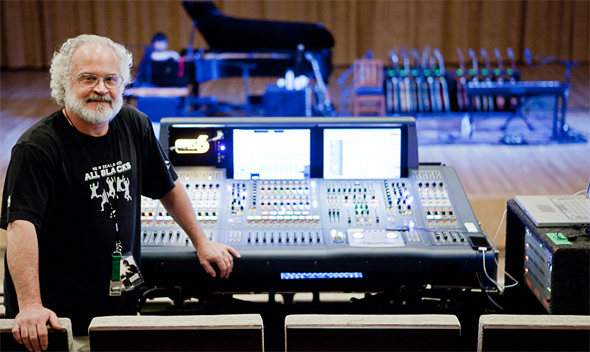
A massive sea change has occurred in live recording over the last two decades. Today nearly every major touring act makes daily live multitrack recordings of their shows, largely due to the ease with which it can be done.
Modern live console manufacturers build in sophisticated recording interfaces as a matter of course. Avid made it easy with a direct connection between the Venue platform and Pro Tools HD. That was truly a game changer. Midas and Klark-Teknik have a console and hard disk recorder combination that operates at 96 kHz and will record 96 tracks interfaced with only a small handful of Cat-5E network cables. I can say from my experience it doesn’t get easier or higher fidelity than that when recording from the front of house desk.
Multiple manufacturers offer simple interfaces and the opportunity for the “virtual sound check” where last night’s show recorded to DAW or stand-alone HDR can be used as a pre sound check system setup tool. In certain circumstances it’s even possible to eliminate the live sound check entirely.
I can think of no other single tool that has been more instrumental in helping me provide the best possible show for all patrons. I can spend hours before the band arrives for sound check getting the coverage in the venue just right so that the actual sound check can focus on finer details and getting the onstage mixes dialed in, without the house sound going through drastic changes. Having a stable and consistent house mix going before the talent walks onstage is priceless.
When I first began to multitrack record all live performances by my clients, I used multiple refrigerator racks stuffed with 64 channels of Grace microphone preamps and 64 channels of Apogee AD8000 A/D converters. This initially fed 64 channels of Sony PCM900 MDM, and later a Pyramix DAW, and it required an isolated copper split from the multicore, as well as a dedicated operator (for the MDM anyway, to change tapes) and hours each day to check and sort out problems.

When Avid debuted the Venue platform, I made the decision to switch from an analog to a digital live house console and ditched the refrigerators in favor of the Pro Tools HDx interface. While this certainly made things easier, it didn’t necessarily make for the highest fidelity possible, especially in view of the fact we were using better and better microphones. The Avid system was limited to a lower sample rate (48 kHz maximum) — so when it became available, I moved on to the previously mentioned Midas/K-T rig that records at 96 kHz.
Benefits To Both
In addition to the proliferation of inexpensive, sophisticated multi-track recording technologies, several other developments in live sound over the last couple of decades have improved the quality of live recordings.
Line array loudspeaker technology made a great impact on the quality of both live and recording. We’ve seen the evolution of tightly focused, well-balanced arrays that keep sound pointed at the audience where it belongs while minimizing the “spill” back onto the stage.
With the addition of cardioid subwoofers, modern DSP, and sophisticated array predictors, it has become possible to steer sub bass reliably and further reduce sound levels onstage in the low frequencies that have traditionally annoyed monitor engineers and guitar technicians even with well focused mid/high arrays. What this means to the recording engineer is less leakage and a far better signal-to-noise ratio than possible in the past with conventional loudspeakers.
